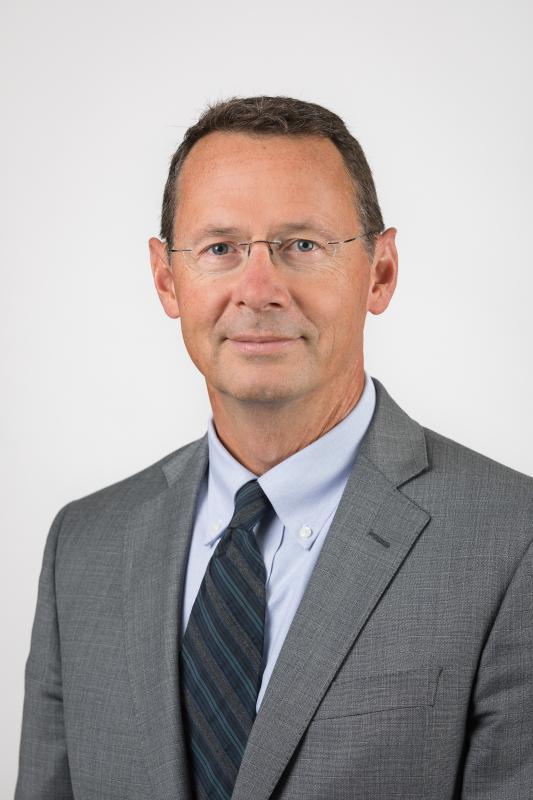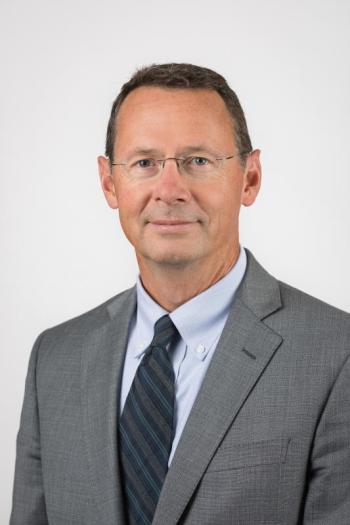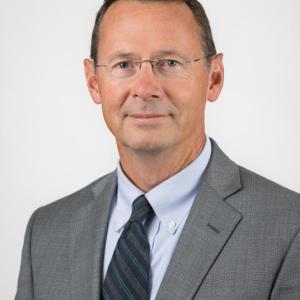Mark Fourre: Keep it up and we will get there
Life, we know, is full of risk. The challenge is to find a risk-benefit balance that produces the best outcome. So it is with COVID-19.
During the early days of the pandemic, the risk of COVID-19 appeared high and we at Pen Bay Medical Center and Waldo County General Hospital, like hospitals around the country, devoted nearly all of our resources to preparing for COVID-19 patients. We retrofitted patient rooms, created stand-alone testing facilities, developed new procedures and practiced them over and over again.
It has been a remarkable challenge, and we feel good about the preparations we have put in place.
The price we paid was to suspend non-essential procedures and office visits. We did this for two reasons. We believed focusing all of our energy on preparing for the pandemic would bring the greatest benefit to our community. We also calculated that the benefit of preventing a patient from contracting COVID in our facilities or unintentionally bringing COVID-19 into our facilities was greater than the risk of delaying non-emergent care. As much as possible, we needed to preserve the hospital as a safe place from which to respond to the pandemic.
Looking back, I am confident that this risk-benefit balance produced the best outcome: We are fully prepared to help this community through COVID-19.
But the calculus has changed. The full COVID surge did not happen, and today the prevalence of COVID-19 in our communities remains very low in part because our community embraced social distancing and the need to wear masks.
This has allowed us to recalculate the risk-benefit equation. Today, the risk of coming to the hospital is extremely low, and the risk of not coming in for care can be significant. Therefore, we have begun carefully and deliberately to increase access for patients with time sensitive conditions.
In health care, we are always sorting out the risk-benefit balance – whether we order a test, prescribe medication or recommend surgery. For example, the risk-benefit balance of operating on a young athlete is different from operating on someone who has advanced heart disease. We assess the risk of an action against the possible benefit and base our recommendations on that. In the case of COVID-19, we are finding that the risk of not receiving time sensitive care is greater than the risk of exposure to the illness.
What do I mean by time sensitive care? If a patient has diabetes and we have been unable to help the patient manage their diabetes with telemedicine, we will want to bring them in for an office visit. Otherwise, we know for sure that at some point down the road they are going to develop serious complications and may end up in the emergency department needing to be admitted to the hospital. The same is true for screening. If a mammogram reveals a concerning finding, we need to bring the patient back in for further evaluation. If it turns out to be cancer, we need to treat the patient in a timely fashion.
So how does a patient know if the care they’re concerned about is time sensitive and requires a face-to-face appointment with a care provider?
If a patient feels like they are having an emergency; for example, they have severe chest pain or show signs of a stroke– they should call 911 first.
If the patient has symptoms that are not clearly an emergency, they should call their primary care provider. The provider will go through a series of questions to determine whether they can help you over the phone or through a video chat or whether you need to come in for an office visit.
We recognize that there are categories of time sensitive care that may not be apparent to many patients. This care includes important screenings such as colonoscopies and mammograms. In these cases, we have begun to reach out to patients to schedule appointments.
When patients do come to any of our facilities, they should do so feeling confident that we have worked incredibly hard to ensure that everyone walking through our doors gets the care they need in a truly safe setting. Measures we have put in place include mandating the wearing of masks, paperless admissions and daily screenings of our care team members. We have also reconfigured waiting rooms so that seating is safe.
This new normal at PBMC and WCGH is not so different from the reopening of other parts of our state. Because the risk-benefit balance of COVID-19 has evolved, restaurants are again seating diners, retail stores are welcoming customers and other businesses are bringing back employees. This is critical not just for the economy but for the health of our communities. With the low prevalence of COVID-19 in Maine, the risk of increasing poverty – which we know leads to a wide range of adverse health outcomes – may eclipse the risk of further spread of illness due to the Coronavirus.
In fact, any number of social determinants – those social and economic conditions in which people are born, live, learn, work, play, worship and age – must be considered.
We already see how social distancing can be substantially more difficult for those with adverse social determinants such as poverty. Another example, closing schools may increase food insecurity for students who relied on free lunch programs. We must include these social determinants in our risk-benefit analysis if we are to fulfill our shared vision of making our community the healthiest in America.
As we move forward, the key for us at PBMC and WCGH and for our community as a whole is to proceed thoughtfully, intentionally and gradually so we can monitor the results and decide whether to continue reopening or to take a step back.
Of course, we all want to move forward. This will require that we all do our part to adhere to social distancing guidelines. Stay six feet apart from others, wear a mask when you are around other people and wash your hands frequently. It has worked incredibly well so far and has allowed us to take our first steps back towards life as we knew it. Keep it up and we will get there.
Mark Fourre is CEO of Pen Bay Medical Center and Waldo County General Hospital
Event Date
Address
United States


























